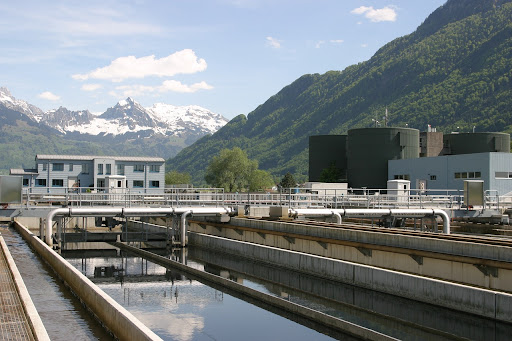When wastewater (water that is no longer suitable for its intended use) leaves houses through sewage pipes, it flows to a water treatment plant. There are miles of underground pipes in the sewage system that transport wastewater to the treatment plant for purification.
At the treatment facility, commercial, residential, and industrial wastewater is gathered and put through a number of procedures and filtrations to produce safe, clean water.
Water supply and wastewater management are crucial tasks that the public and private sectors must cooperatively execute. Their disruption, corruption, or dysfunction would seriously affect national security, the economy, public health, and safety, or some combination of these.
While the industry is experiencing growth, at the same time, water treatment facilities are being targeted by cybercriminals. Due to the importance of these water treatment plants for every state and nation, hostile hackers and Advanced Persistent Threat (APT) groups have targeted them in the past with various objectives. And they do this using malware and other sophisticated techniques.
These criminals are looking to exploit vulnerabilities to gain access to sensitive data or disrupt operations. If they successfully do so, even one water plant that fell into the hacker’s arm can affect millions of people. Thus, the vulnerability and weaknesses of water treatment plants must be mitigated.
Vulnerability Management: Water Plants and Malware Threats
Malware is defined as malicious programs and software that can pose a danger and disrupt normal device operation. Malware can
- grant unauthorized entry
- consume system resources
- change users
- Illegally get passwords
- demand a ransom and many other things.
Malware distributors are frequently motivated by monetary gain. Infected computers will be used to mount an attack, acquire banking information, or derive benefits from victims.
As criminals' attacks become more sophisticated, you must become more prepared. This is where vulnerability management comes in. Vulnerability management entails methodically reducing such exploitable loopholes in a treatment plant's industrial control systems.
Even if a well-protected network may be breached by a cybercriminal or foreign actor, the majority of cybersecurity breaches could have been avoided with simple safeguards. To protect themselves from these threats, water treatment facilities need to implement robust cybersecurity measures.
7 Tips and Strategies to Prevent a Water Treatment Plant from Malware Threats
There are many strategies that water treatment plant operators can use to protect their facilities against malware threats. Below are some of the cybersecurity solutions and tips:
1. Hire an OT Security Company
It will do you good to employ the services of an operating technology company. It gives internal staff less work to manage an operational technology cybersecurity tool. This provides them more time to concentrate on other duties.
An operational technology firm enables executives to identify potential cybersecurity risks in a threat detection that could have a significant impact on the deal structure. Through self-reporting and third-party verification services, their service speedily evaluates cybersecurity maturity levels, iterative risks, and external cyber liabilities at a target acquisition. They can also perform more in-depth evaluations before or after acquisition.
2. OT Security Solution and Platform
This platform gathers data directly from multiple IT/OT/IoT devices, giving rise to a detailed asset inventory. Alerts and events across all operational and cybersecurity systems are correlated to provide meaningful, contextualized insights. These insights are presented in intuitive dashboards and prioritized based on their impact on operational continuity.
Some of these platforms create a digital twin of the area of operations using the data they collect. The platform then allows the operational and security team to focus and proactively avoid vulnerabilities before they become breaches by utilizing a non-intrusive breach and attack simulation engine.
When cyber incidents necessitate SOC intervention, the platform enables seamless collaboration among operational and cyber teams. This supports analysts with a customized workbench for in-depth forensic investigation.
Below is a list specifying why you need an OT security solution:
- simplifies cybersecurity processes in order to ensure continuous operations
- prevents breaches by proactively identifying vulnerabilities
- breach and attack simulation that is unique and non-intrusive
- unrivaled view of asset inventory based on location, process, and continuity impact
- mitigation playbooks generated automatically for a variety of attack scenarios
- processes for compliance and auditing are simplified
- designed for environments containing hundreds of multi-vendor / multi-protocol devices.
- increases the value of existing IT/OT/IoT security systems.
- continuous monitoring of OT security and compliance
3. Educate Staff on Cybersecurity Risks
According to a recent survey, many American workers are still unaware when critical infrastructure is the target of cyberattacks. As an illustration, 45% of respondents were unaware of the cyberattack on Florida's water supply. Probably a much higher percentage of professionals employed in the water treatment industry weren't aware of it.
Your pharmaceutical and water treatment factory should provide regular employee training to promote awareness about cyber defense and reduce the risk of cyberattacks.
No matter how much money you invest in cybersecurity software and the IT workforce, if your non-IT employees aren't taught to spot potential threats, all of your efforts may be futile. Cybercriminals aim at those staff, which is why all workers should be educated on cybersecurity procedures regularly.
4. Adopt a "Zero Trust" strategy
Limiting access is vital in addressing cybersecurity concerns; access should never be automatically extended to anyone, not even the most senior worker at a plant. This entails re-establishing confidence by not believing anyone unless they have undergone thorough verification and validation.
5. Updated Your IT Systems Periodically
When software developers discover a flaw, they release bug fixes or other upgrades to address the problem. Many businesses, however, take these upgrades for granted and waste time. They may take several weeks to implement them, or they may never implement them at all, putting their devices exposed to malware and other cyber attacks.
Cybercriminals are well aware of this and exploit the situation. They can exploit unpatched vulnerabilities to target organizations that have not updated their software. As a result, it is critical to release updates as soon as possible.
This pertains to everything from software applications to the firmware and operating systems of your IT infrastructure. Anti-malware or virus protection must also be kept up-to-date regularly. This will protect you from some of the most recent known threats.
Final Thought
A wastewater treatment plant's goal is to attain water quality requirements that are compliant with laws governing water safety. We can enjoy safe, pure drinking water directly from the faucet thanks to this ongoing procedure.
However, a water treatment facility's efficiency depends on more than just having the appropriate tools, applying the appropriate chemicals, or employing sizable personnel. Keeping internet-connected devices secure should be a top priority for managers. These are crucial factors!
The tips provided above, however, provide decision-makers with solid beginning points that can direct their subsequent activities.






